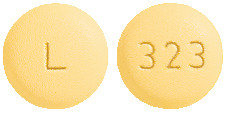1. Why am I using Blooms The Chemist Olmesartan?
Blooms The Chemist Olmesartan contains the active ingredient olmesartan medoxomil. Blooms The Chemist Olmesartan is used to treat high blood pressure which is sometimes called hypertension. For more information, see Section 1. Why am I using Blooms The Chemist Olmesartan? in the full CMI.
2. What should I know before I use Blooms The Chemist Olmesartan?
Do not use if you have ever had an allergic reaction to olmesartan medoxomil or any of the ingredients listed at the end of the CMI. Talk to your doctor if you have any other medical conditions, take any other medicines, or are pregnant or plan to become pregnant or are breastfeeding. For more information, see Section 2. What should I know before I use Blooms The Chemist Olmesartan? in the full CMI.
3. What if I am taking other medicines?
Some medicines may interfere with Blooms The Chemist Olmesartan and affect how it works. A list of these medicines is in Section 3. What if I am taking other medicines? in the full CMI.
4. How do I use Blooms The Chemist Olmesartan?
- Your doctor or pharmacist will tell you which Blooms The Chemist Olmesartan tablet you will need to take each day. This depends on your condition and whether or not you are taking any other medicines. More instructions can be found in Section 4. How do I use Blooms The Chemist Olmesartan? in the full CMI.
5. What should I know while using Blooms The Chemist Olmesartan?
| Things you should do |
|
| Things you should not do |
|
| Driving or using machines |
|
| Drinking alcohol |
|
| Looking after your medicine |
|
For more information, see Section 5. What should I know while using Blooms The Chemist Olmesartan? in the full CMI.
6. Are there any side effects?
Common side effects: feeling light-headed, dizzy or faint; cough; headache; feeling sick (nausea) or vomiting; diarrhoea.
Serious side effects: skin rash or itchiness; painful joints; fast heart beat; shortness of breath or tightness in the chest.
For more information, including what to do if you have any side effects, see Section 6. Are there any side effects? in the full CMI.

